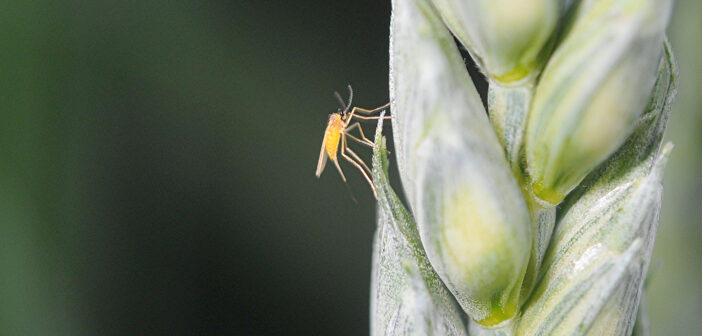Hutchinsons has advised that attention should not only be paid to the orange wheat blossom midge, but also to the yellow lemon blossom midge.
Technical manager, Neil Watson, said: “Traditionally associated with cereal crops in the south of the country, in recent years lemon blossom midge has been reported as far north as Cambridgeshire and the Midlands. Whereas orange blossom midge larvae feed on developing grain in multiple sites, multiple lemon blossom midge larvae feed on single grain sites, allowing unaffected grains either side to compensate, thereby generally impacting less on yield and quality.
“As it appears earlier than orange blossom midge, it is not picked up in monitoring because lemon blossom midge is not attracted to the same pheromone traps as those for orange blossom midge. Detection is often reliant on actual observations, and by the time it is, the damage has already been done.”
Mr Watson pointed out that lemon blossom midge is generally harder to spot than orange blossom midge. “Of the two species, we know more about orange blossom midge than we do about lemon blossom midge. The obvious way to distinguish between the two midges is colour. Lemon blossom midge also appear earlier over a shorter period.”

Neil Watson
“It is possible that warmer, wetter summers are more conducive to the pest,” he said. “A period of warm weather in May with soil temperatures above 13°C activates pupation, but flight occurs when air temperatures are above 15°C ,so this is the crucial time to monitor for activity. As growers select varieties with orange blossom midge resistance, it could be that lemon blossom midge is selected against as it were, and has become more of an issue.
“Whilst there is varietal resistance for orange blossom midge, over 60% of current AHDB listed wheat varieties are believed to have resistance to the pest, there is no known resistance to the lemon blossom midge. Whilst breeders investigate potential resistance sources, even if resistance were introduced, varieties with such a genetic trait would be several years away from market.
“Control with pyrethroids is possible, although there is no product with a label recommendation. However, there is no reason to believe that there should be any differentiation between species in terms of control from products used for orange wheat blossom midge.”




